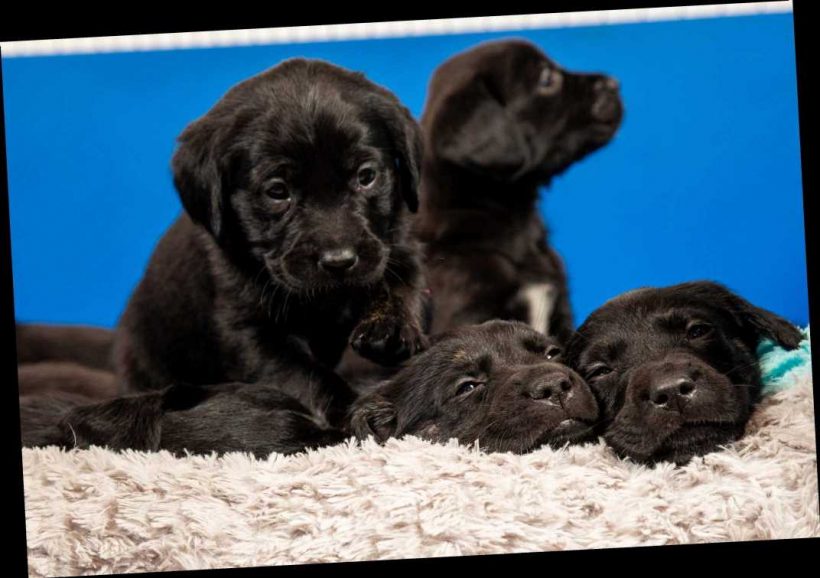THIS adorable litter of puppies is among the first to take part in a pioneering genetic study to help breed the best possible guide dogs.
The 10, six-week-old Labradors are the face of a major research project by Guide Dogs to better understand what makes a successful working guide dog partnership.
More than 3,000 trainee pups across the UK will have saliva swabs taken in a few seconds and sent for DNA sequencing.
Scientists will then perform what is thought to be the most in-depth study of dog genes ever undertaken, with the 'Born to Guide' project aiming to build the most comprehensive picture to date of the link between dog genetics, and health and behaviour.
This data will be used to guide the charity's breeding programme and ultimately boost the 'success rate' for puppies becoming fully-qualified working guide dogs.
Experts at the charity are working alongside staff and volunteers, project partners and academics, such as those from the University of Nottingham on the project.
Dr Tom Lewis, Head of Canine Genetics at Guide Dogs, said: “When we breed puppies, we strive to ensure that they are as healthy as possible and deliver the best training to give them the best possible chance of becoming life-changing guide dogs for people with sight loss.
“We already have extensive health testing in place for our breeding dogs and want to build on this success and find more ways to identify detrimental health conditions. By breeding a guide dog that is less likely to develop a hereditary illness, we can keep them in a vital working partnership and ensure a better quality of life for both guide dog and owner.
“Guide dogs give invaluable independence and companionship to thousands of people across the UK, and we need more of them.
“That’s why Born to Guide is such an important project for our charity – it will enable us to choose our breeding dogs with more scientific insight than ever before and set up our future litters for success.
“We are also interested to ascertain whether we can use genetics to identify dogs that are more likely to qualify as guide dogs, or to tailor the individual training we provide and improve the matching of a guide dog to potential owners with a variety of lifestyles.”
Guide Dogs has been helped with the project by pet food brand Royal Canin UK & IRE, which has provided some initial funding for the proof-of-concept phase, including DNA collection and storage.
The charity will be exploring a number of other collaborations to support the project.
Born to Guide is the latest initiative from Guide Dogs as it looks to build on its 90 years’ experience training and breeding dogs for people with sight loss.
Staff keep in regular contact with the charity’s volunteers and guide dog owners, and if the dogs develop any behavioural or health issues, these are recorded and can then be linked to the dogs’ genetic information.
Guide Dogs will take the data bank of 3,000 full genome sequences and combine it with their internal health and behaviour data.
They will then use artificial intelligence technologies and machine learning to identify relationships between genetic sequences and any health issues, however minor, that develop in its dogs.
Scientists will also map the data against the behaviour of the dogs – allowing a better understanding of the complex relationships between genes and how dogs develop throughout their lives.
It is hoped that data from the project will be shared more widely to support the wider scientific community and dog population.
Dr Lewis added: “Born to Guide is one of the most exciting projects the charity has ever been involved in.
“By using artificial intelligence, we can have a greater understanding of the genes that are present in the best guide dogs and what it is that makes them such incredible partners for people with sight loss.”
Meanwhile, do you see a man or a dog in this optical illusion? Here’s what your answer REALLY says about your personality.
And woman claims puppy training pads are the best way to keep her fridge clean – and people reckon it’s a genius idea.
Source: Read Full Article




